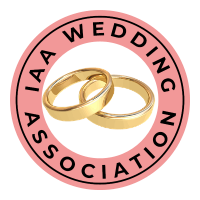5 Elements You Need in Every Successful Blog Post
The growth of blogs has democratized the spreading of information. It doesn’t matter what our stature is in the blogosphere or whether we are blogging for business or pleasure. Our published writings are there for the world to see. That’s a game-changer…
With that said, one question we all have is, “How can we make our blog successful?” After following several bloggers for years, I began to analyze many of the blogs I was reading. Doing this helped me understand why some bloggers were more successful than others. Their content mattered, however it wasn’t the only reason for their success.
A few factors employed by successful bloggers began to emerge. It soon became apparent that for a blog post to succeed it had to do three things. To be successful every post has to effectively convey it’s message, it has to engage it’s readers, and it has to fulfill it’s blogger’s mission. To achieve it’s goals, every post has to have these five critical elements.
Are your posts missing any of these critical elements?
- A strong hook compels your visitors to continue reading.
- Descriptive subheadings make your content quickly scannable.
- Thoughtful transitions guide your readers from point to point.
- Outbound Links guiding your readers to more relevant content.
- Your Conclusion Should Encourage Readers Further Action.
You Need a Strong Hook to Keep Your Readers Interested
I’ve never seen a successful blog post that didn’t have an engaging introduction. I’ve read a lot of posts, that had introductions without a hook. They didn’t have a compelling reason for the reader to keep going.
Let me give you an example of a good hook. This is from a post I wrote in October, 20+ Ways Your Business Benefits From Using Social Media:
It begins by telling how more than 3 billion people are using social media platforms on a regular basis. Social media is where conversations begin and communities of like minded people meet to engage and exchange ideas.
The benefits of using social media to grow your business are clearly stated. There is also an implicit promise that this post will teach the reader how to “easily recreate these benefits for your blog”.
The first few sentences of your post, need to convince the reader that your post is worth their time.
Descriptive Subheadings Make Your Content Quickly Scannable
If your blog post is very short you probably don’t need to use subheadings. However, anything longer than about 400 words would benefit from being broken into sections. Building an outline for longer posts makes it easier to organize your content ideas. For your longer posts, using subheadings helps you compose a clear blog post outline.
Subheadings act like signposts, guiding your reader through your story. Subheadings also tell readers where they are and what’s coming next. Without subheadings your points could begin to merge with each other. You certainly don’t want people getting lost while reading your post. If that happens, more than likely your visitor will simply stop reading.
Thoughtful Transitions Guide Your Readers From Point to Point
A transition is a bridge taking your readers from one thought to the next. Sometimes transitions are unnecessary, a subheading can be used instead. However, if your post feels disjointed or choppy in it’s presentation of your content, you may need to add a quick transition.
Transitions may be helpful before a new post section. Transitions also work well when you use them to introduce lists.
How to Use Links to Connect Readers to Additional Relevant Content
You don’t have to include links in your blog posts. But the question I would ask you is, WHY NOT? I believe it’s always a good idea to include at least one link, I usually include several. I regularly include two types of links. I include internal links which link to relevant information in my own blogs. External links are also important. External links provide relevant information from other websites:
Search engines love both types of links and including them also helps build credibility with your readers. Links on your blog posts help your readers dig in … and stick around.
- Links to posts on other people’s blogs position you as someone helpful and knowledgeable.
- Links to sites like Wikipedia show how you source your content.
- Links to your products or services help you make more sales.
- Links to books on Amazon can bring in affiliate income – and also make you look helpful and well informed.
I like to include links throughout my posts, these links give more information about a particular point I’m making. If you quote someone or give an example, that’s a great time to provide a link.
In some cases you might not want to distract your readers, a good example might be in certain how-to posts. In those situations you should include some “further reading” or “where next?” suggestions at the end that blog section or at the end of the blog post.
Your Conclusion Should Encourage Further Readers Action
The conclusion is the element that bloggers neglect the most. The message is clear, don’t end your post abruptly. Your conclusion gives you a great opportunity to engage your readers one more time. Your conclusion may be your final chance to positively influence their actions.
You might wonder what the best conclusion could be for your article. Your conclusion should be a brief summation of your post’s content. Finally, you need to give your “call to action”.
While you’re busy writing your blog post it may seem overwhelming to include everything you want. We all work under time constraints, there never seems to be enough time in our days. As we hurry to meet deadlines we might not include every idea that we wanted.
That’s why my first step is to outline how my ideas will flow through my post. After writing your first draft, if you’re like me, you then begin the hard part. It’s also the important part. Editing your ideas into a post that will engage your audience in a thoughtful and interesting way.
However, as you edit you might want to use our five elements as a checklist. Ensure that you have included each element, or have a good reason why you haven’t.
What are the important points that you include in every post? Do you outline your post ideas before writing your post? Do you miss using any of these 5 elements in tour posts? Do you intend to include these elements in your next post? Share your thoughts or tips with us in the comments.

